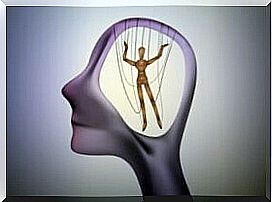Fear, Anger, Joy And Sadness: Discover The 4 Primary Human Emotions

Fear, anger, joy and sadness are the four basic human emotions.
We have all felt them at least once in our lives, no matter what time, age or culture. But, do you know how to dominate them? Are you really aware of these?
If these emotions are part of our daily life, it is not on a whim. Indeed, these emotions play an important role in our psychological development.
This means that they serve to warn us and guide us in conserving the organism and socializing with others.
It is important to remember that we are all afraid, and we all feel anger, joy or sadness, because in this way the body and the mind grow.
We have learned and will always learn from our emotions. So, if you had a good time filled with happiness, it is possible that it shaped your character, just as if you suffered from something that saddened you, made you angry, or scared you.
It does not matter your age, where you live or your profession. All of us, without exception, will experience these four basic emotions, and more than once.
If you pay attention to them, you will find that these emotions are very useful information.
Indeed, they allow us to know how we are feeling at a specific moment and they represent a learning guide in our lives, so that we can understand ourselves and know how to move forward.
There are no good or bad emotions. Contrary to popular belief, we cannot categorize emotions in this way.
However, there are many emotions that are more or less pleasant. Each of them has a very specific function and all are essential.
What are their functions?
These four basic, or primary, human emotions have an energetic quality, because they allow us to act expansively with others (anger, joy) and with ourselves (sadness, fear).
Let’s analyze these four primary emotions one by one, and then discover their specific functions in our lives:
– The fear. This is an emotion that experts characterize as a “withdrawal emotion”. It is part of the group of reflective emotions and its role is to warn us of the imminent presence of danger, in other words, it prepares us to receive it and can cause us difficulties.
It also allows us to assess our ability to face situations that we perceive as threatening.
If we learned to know first and then how to deal with fear, we would react with caution and move away from panic, phobia or recklessness.
– Joy. Also called the “emotion of openness,” joy helps us bond with others. Thus it finds itself in the category of expansive emotions (just like anger).
Joy can be manifested in different ways, the most common of which are tenderness, sensuality and eroticism.
If we manage joy well, then we can achieve serenity and wholeness. However, if we do not know how to handle it well, sadness, euphoria or frustration will appear.
– Sadness. This emotion belongs to the group of withdrawal emotions and is considered to be the most thoughtful of all.
It always refers to something that has happened in the past and its role is to help us become aware of a thing, situation or person that we have lost or are missing.
Sadness also allows us to free ourselves from what is not ours or what hurts us. Finally, sadness allows the people around us to accompany us, preventing us from becoming too vulnerable or dependent.
– Anger. This is the second expansive emotion. It’s an impulsive emotion, and a way to let go of a weight, to let go of what bothers us, what we believe is wrong or what hurts us.
Anger involves an overload of energy, which sometimes helps us achieve what we love. Thus, it should not always be considered “negative”.
However, if we express anger in the extreme, it will become just one more problem, instead of helping us resolve the situation.
Once you become aware of your emotions and learn to live with them, it will be much easier to realize that each of them is positive and beneficial in your life.









